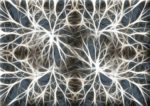
Some non-invasive brain stimulation techniques may reduce chronic pain in the short term
 There is positive evidence that some non-invasive brain stimulation techniques help lower chronic pain, but more high quality studies are needed, says an updated Cochrane Review.
There is positive evidence that some non-invasive brain stimulation techniques help lower chronic pain, but more high quality studies are needed, says an updated Cochrane Review.
Non-invasive brain stimulation techniques aim to reduce chronic pain by altering brain activity. The techniques involve electrical stimulation of the brain and include:
- Repetitive transcranial magnetic stimulation
- Cranial electrotherapy stimulation
- Transcranial direct current stimulation
- Transcranial random noise stimulation
- Reduced impedance non-invasive cortical electrostimulation
The review of 94 trials involving nearly 3,000 people found that there is evidence that single doses of high-frequency repetitive transcranial magnetic stimulation of the motor cortex and transcranial direct current stimulation may have short-term effects on chronic pain and quality of life. But the evidence is not of a high quality.
But there is no evidence that chronic pain is reduced by low-frequency repetitive transcranial magnetic stimulation, or repetitive transcranial magnetic stimulation applied to the dorsolateral prefrontal cortex or cranial electrotherapy stimulation.
“There remains a need for substantially larger, rigorously designed studies, particularly of longer courses of stimulation,” the authors conclude. “Future evidence may substantially impact upon the presented results.”
Click here to read the original research.
For more in-depth features, interviews and information, subscribe to Arthritis Digest magazine, a popular title that’s published six times a year. Click here for the digital version or tel 0845 643 8470 to order your had copy. You’ll know what your doctor is talking about, what new drugs are in the pipeline and be up to date on helpful products.
